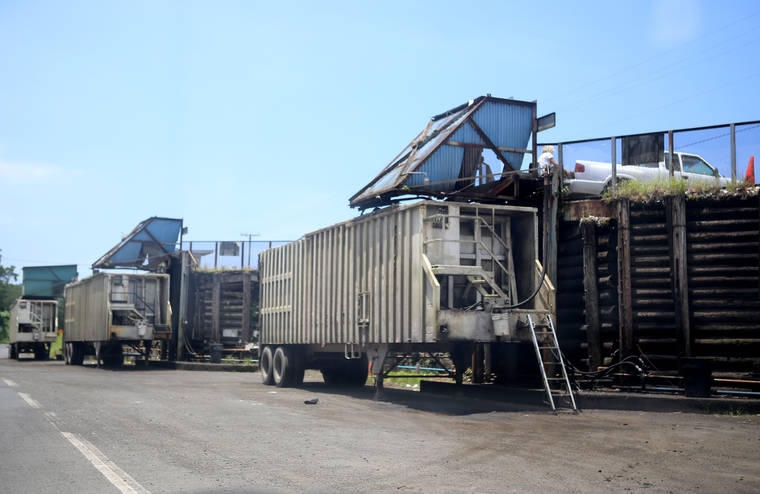Garbage diversion is the goal: Solid Waste Advisory Committee wraps up draft report
HILO — The newest crop of trash-talkers advocates the carrot, not the stick.
Public education and outreach to increase diversion from the landfill is the top priority of the Solid Waste Advisory Committee, which on Wednesday put the final touches to its draft plan before it will be submitted to county officials.
The committee is convened every 10 years to recommend long-term goals to handle the island’s garbage. The plan still has a long way to go — after a back-and-forth with the county, the draft will then be sent to the state Department of Health before a 60-day public comment period begins in November.
The committee has been convening since May 2018, going over the 369-page 2009 plan line by line. That plan, dubbed “The Path to Zero Waste,” laid out an ambitious plan to divert trash from the landfill by recycling, reusing and charging residents dumping fees.
“The community should definitely appreciate what you’ve done,” county recycling coordinator George Hayducsko, who chairs the committee, told the volunteer seven-member group.
The committee ended up with 80 recommendations that were grouped Wednesday into six main recommendations.
The county currently diverts about 20% of its waste, including green waste, before it gets to the landfill.
In addition to beefing up education and outreach, the committee also recommends renegotiating a more favorable contract with Waste Management, operator of the West Hawaii Sanitary Landfill at Puuanahulu, adding 10-12 household hazardous waste collection events annually, changing county code to encourage commercial recycling by allowing small businesses to drop recycling off at transfer stations, taking into account the full impacts of dealing with waste such as energy use, greenhouse gas emissions and toxicity and developing county policy and ordinances increasing source reduction and recycling.
Unlike prior commissions’ recommendations, a bag-tag pay-per-throw plan drew very little support, ending below many other recommendations. The concept of having those who toss the trash pay for the privilege has generally been met with opposition and fears that it would increase illegal dumping around the island.
The committee decided not to spell out specific goals in the plan, but to allow them to be developed by Environmental Management staff, while the committee focused on the high-level goals.
“For every new administration, the goals change. Every mayor is going to have his different role seeing where the money is going to go,” said committee member Steven Araujo. “It depends on the politics of the matter, no matter what.”


